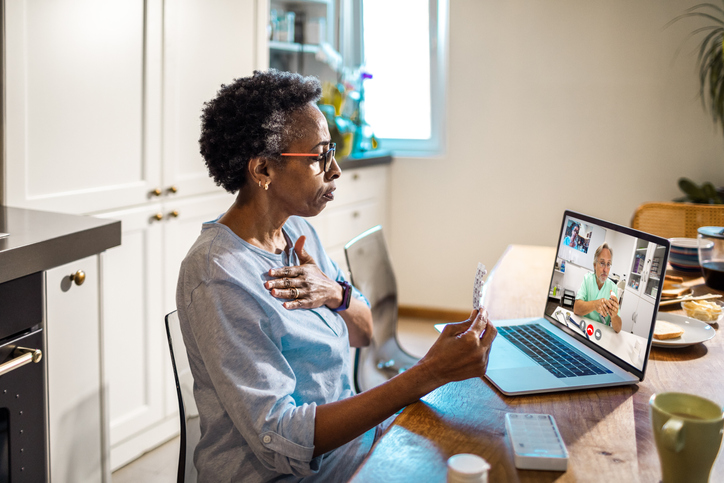 |
| People who don't speak English as their primary language have been less likely to receive care through telemedicine during the pandemic, study shows. Photo: Getty Images. |
By the end of 2020, telemedicine had become mandatory in many clinical settings as an alternative model of care for patient evaluation while maintaining strict social distancing standards and decreasing the risk of viral transmission. However, this rise in telemedicine did not reach all patient groups equally, potentially exacerbating health care disparities.
An evaluation of the delivery of ophthalmic telemedicine at a tertiary eye care center revealed patients who are men, identify as Black, have an educational level of high school or less and do not speak English as a primary language were less likely to receive telemedical care during the pandemic compared with in-person care. In addition, older patients used video-based telemedicine visits less often as opposed to telephone-based visits.
The study included a total of 2,262 telemedicine ophthalmic encounters for 1,911 patients of Massachusetts Eye and Ear. The median age of the patients was 61 years, and 61.70% were women. With regard to race and ethnicity, 4.55% of patients identified as Asian, 6.70% as Black or African American, 1.20% as Hispanic or Latino and 76.14% as Caucasian.
Using multivariate analysis, factors associated with decreased telemedical care included male sex (odds ratio [OR]: 0.86), Black race (OR: 0.69), not speaking English (OR: 0.63), educational level of high school or less (OR: 0.83) and age (OR per year of age: 0.99). When comparing telephone- and video-based telemedicine visits, decreased participation in video-based visits was associated with age (OR per year of age: 0.96), educational level of high school or less (OR: 0.54), unemployment (OR: 0.28), retirement (OR: 0.22) and disability (OR: 0.09).
The researchers suggested that barriers to the use of telemedicine in those populations who did not access such care include limitations in the availability and affordability of high-speed broadband, lack of access to suitable electronic devices and lower technological and health literacy.
“Implementation of telemedical care does not necessarily improve access to care for all populations, and overreliance on telemedicine using current approaches may inadvertently increase health disparities for historically marginalized populations,” they noted in their paper. “The potential exacerbation of health inequalities through the use of ophthalmic telemedicine highlights the importance of focusing on equitable health care delivery through telemedicine in the future.”
Aziz K, Moon JY, Parikh R, et al. Association of patient characteristics with delivery of ophthalmic telemedicine during the COVID-19 pandemic. JAMA Ophthalmol. September 23, 2021. [Epub ahead of print]. |


